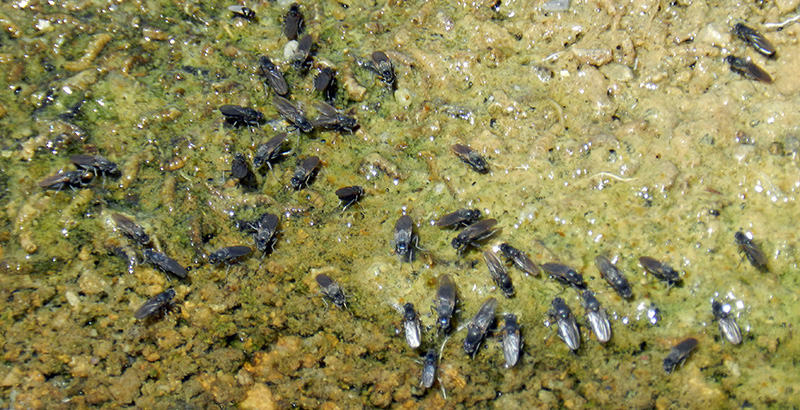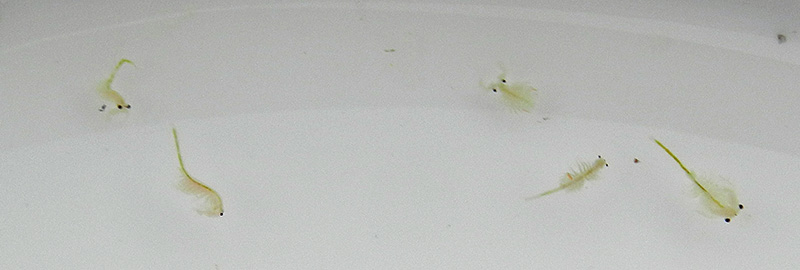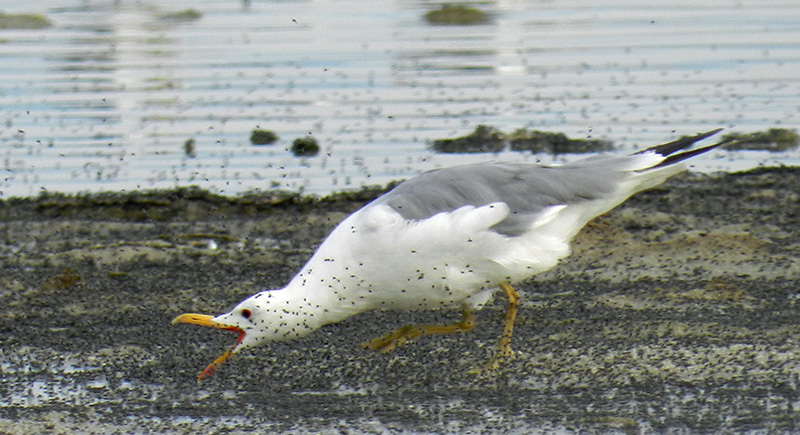
This post was written by Sandra Noll, Birding Intern in 2014, 2015, & 2016.
Flies are usually thought of—if they are thought of at all—as a nuisance. Here at Mono Lake, however, I’ve come to have a higher regard for flies—at least alkali flies (Ephydra hians).

This fly is an important link in Mono Lake’s simple, yet productive food chain. Algae feeds trillions of alkali flies and brine shrimp, which support about 40,000 nesting California Gulls and their hungry chicks, as well as 10,000 or so migratory Wilson’s and Red-necked Phalaropes and over a million Eared Grebes, plus other bird species in lesser numbers.

The life cycle on an alkali fly can be compared to that of a butterfly—in scuba gear. The adult fly lays eggs underwater, which hatch into larvae (caterpillar-like) that live underwater grazing on algae until ready to attach to a rock and form a pupae (cocoon-like), in which metamorphosis takes place. It emerges as a winged adult and pops to the surface. Hairs on the adult fly’s body capture tiny capsules of air, enabling it to submerge at will to feed and lay eggs for the next generation.
Masses of flies carpet the beach at this season, their numbers peaking just as gull chicks hatch and migratory birds arrive. They rise in low clouds when disturbed but avoid human contact. Vegetarian flies that fly away when you approach … no nuisance and no bites!

The sheer number of flies and the fly-eating techniques of the birds can be mesmerizing. Some gulls are stompers, using their webbed feet to stir up flies, larvae, and pupae then peck and swallow as many as possible. Others are beach runners, mouth agape, gathering multiple flies on each run. Eared Grebes cannot walk on land, but are exceptional swimmers and divers, feasting on brine shrimp and aquatic fly stages underwater. Wilson’s Phalaropes sometimes walk and feed on flies at the water’s edge but also use a unique feeding technique: swimming in tight circles, they create a vortex of rising food to be siphoned up through long, narrow bills.

Voracious phalaropes and grebes double their body weight on the nutritious, fat-rich alkali flies and plentiful brine shrimp in preparation for their southerly migration. Wilson’s Phalaropes, for example, nest in the arctic and migrate over 3,000 miles to wintering grounds in South America! Mono Lake is an essential rest and refueling stop for the birds’ survival.
Each creature in this simple, essential food chain is uniquely adapted to its own particular niche.
